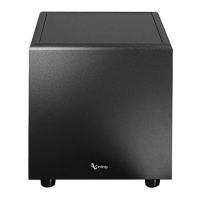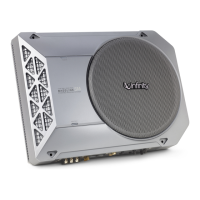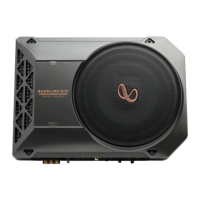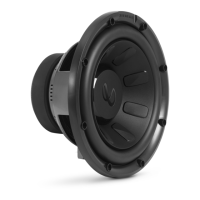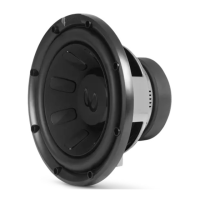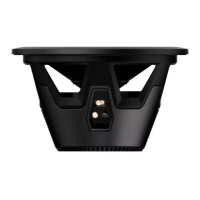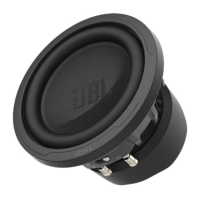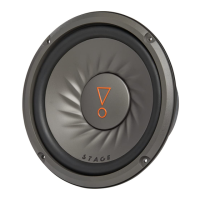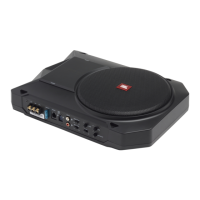16
◆
HTS-10 Home-Theater System – Owner’s Manual
OPERATING THE SUBWOOFER
1. Initially set the subwoofer’s Volume control
❺
(Fig. 9) to the minimum position.
2. Initially set the subwoofer’s Crossover Frequency control
❸
(Fig. 9) to 12 o’clock position.
3. Turn on your entire audio system and play any music source.
4. Turn the Volume control
❺
(Fig. 9) to its mid-position. If no sound emanates from the sub-
woofer, check the AC line cord and input cables. Are the connectors on the cables making
proper contact? Is the AC plug connected to a “live” receptacle?
5. Set the overall volume control of the receiver/processor to a comfortable level. Adjust the
subwoofer’s Volume control
❺
(Fig. 9) until you obtain a pleasing blend of bass. Bass
response should not overpower the room but rather be adjusted so there is a harmonious
blend across the entire musical range. Many users have a tendency to set the subwoofer vol-
ume too loud, following the belief that a subwoofer is there to produce lots of bass. This is
not entirely true. A subwoofer is there to enhance bass, extending the response of the entire
system so the bass can be felt as well as heard. However, overall balance must be maintained;
otherwise, the music will not sound natural. An experienced listener will set the volume of
the subwoofer so its impact on bass response is always there but is never obtrusive.
6. The Crossover Frequency control
❸
(Fig. 9) sets the high-frequency roll-off, and is
adjustable from 50 to 150Hz. Where you set this control depends on the low-frequency
capabilities of your satellite speakers, system placement, and other factors affecting the mid-
bass region.
a. When using the HTS-10 System in a Dolby Digital or DTS home-theater system
with a dedicated LFE (Low Frequency Effects) output, set this control knob to 150Hz
(full clockwise position). Set your receiver/processor speaker mode to “small” or
“high-pass” for all channels. Some receiver/processors allow you to adjust the high-pass
frequency for the “small” or “high-pass” setting. If your receiver/processor has this
capability, it is recommended that you set the high-pass frequency to the lowest
setting that is 80Hz or above. Consult the manual for your receiver/processor for more
information about these adjustments.
b.
When using the HTS-10 in a Dolby Pro Logic home-theater or any standard system without
a dedicated LFE (Low Frequency Effects) output, the recommended crossover
frequency is 80Hz. Set the control knob to approximately the 12 o’clock position.
7. Room placement of the subwoofer is also an important aspect of its installation. It may be
necessary for you to try various locations in your listening room before you choose the final
location. Some possible starting points include: behind the right-channel satellite speaker,
along the back wall between the satellites, along a side wall, or behind a couch or a chair.
In general, the closer the subwoofer is to walls and corners, the greater the effect of low-
frequency enhancement. Experiment with the Volume control and different room locations
until you are pleased with the result you obtain for your particular application.
S
ET
C
ONTROLS
...
P
OWER
O
N
...
A
DJUST
V
OLUME
...
C
ROSSOVER
F
REQUENCY
C
ONTROL
...
R
OOM
P
LACEMENT
...

